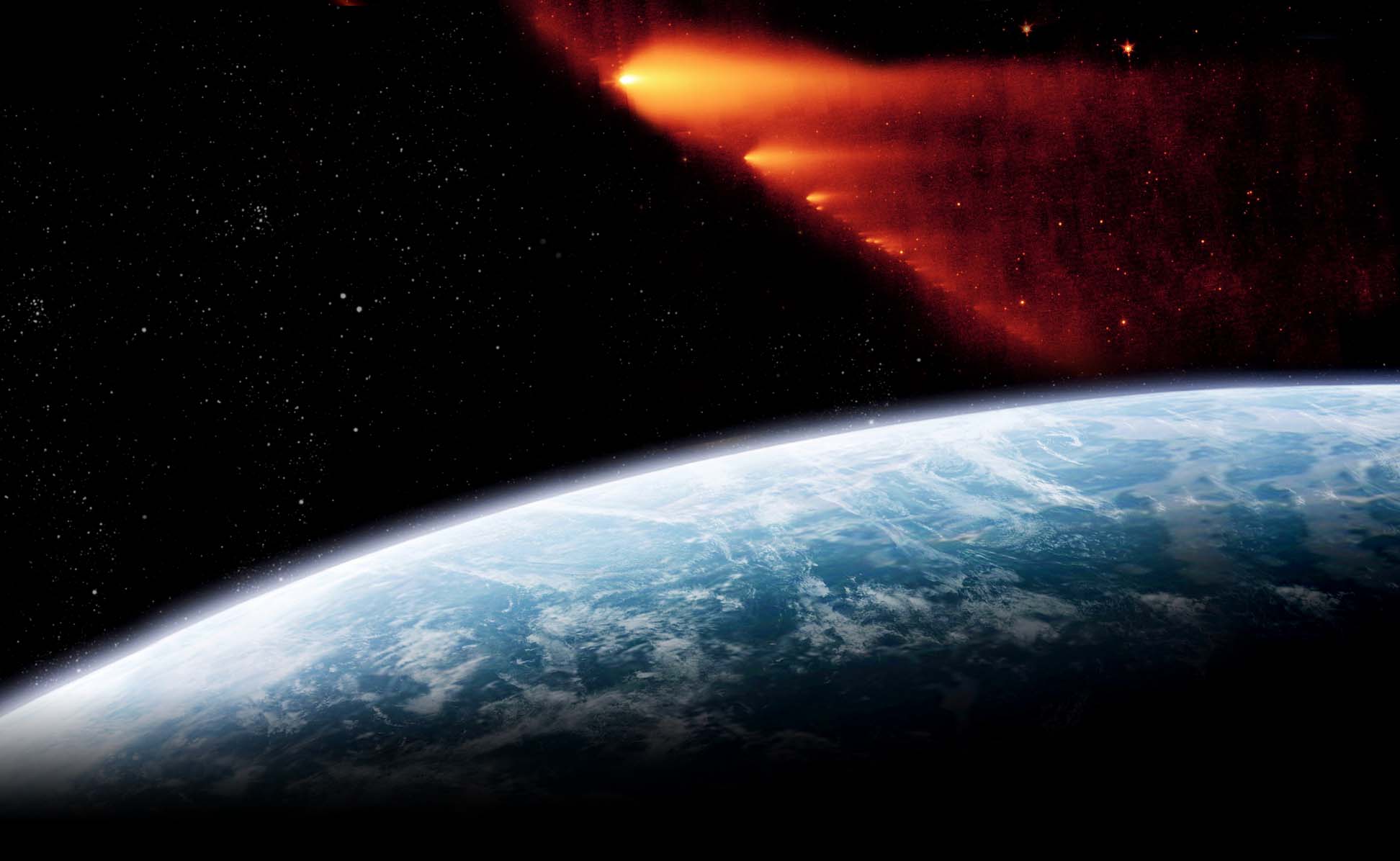
“Potentially Hazardous Asteroids” circuits inside the orbit of Jupiter
The Cosmic Factor
by Randall W. Carlson
Part 1: The Boy who Cried Wolf
We all remember the well-known fable told by the ancient Greek slave and storyteller, Aesop, about the shepherd boy drafted to keep watch over a flock of sheep, and who, out of boredom, decided it would be great fun to fool the nearby villagers by pretending that a wolf was attacking the sheep. After the villagers rushed out to save the sheep a number of times based upon the boys fabrications they refused to believe him when the wolf actually did show up and began to consume the sheep. The obvious declared moral of the story is generally expressed as “There is no believing a liar, even when he is telling the truth.” However, there is, I submit, a second, unstated moral to the story as well. In spite of the shepherd boy’s prevarications, the wolf was real. And the wolf did, in the end, show up to devour the poor sheep…
Bringing us to the point of this article: for centuries various predictions have been made about the end of the world on certain dates by assorted means, and on quite a number of occasions these predictions have been believed by a significant number of people. Obviously the world did not perish in late December of 2012 – the most recent date proffered in a long tradition of doomsday predictions that failed to materialize.
My first encounter with such notions came about in the late 1960s while still in high school. I had a poster on my bedroom wall entitled ‘Goodbye California’ and it showed the entire state of California breaking off from the North American mainland and sinking into the Pacific ocean, an occurrence which was widely believed to be impending by a considerable number of folks back then. A few years later, in 1973, with the approach of Comet Kahoutek, apocalyptic predictions were proliferating, causing fairly widespread consternation among the astronomically challenged. I next recall the month of November, 1978 being foretold as a time of extensive global disasters. Then came the early 1980s and more predictions about a series of escalating disasters brought about by planetary alignments. The eruption of Mt. St. Helens in May of 1980 was interpreted as being the opening act of this apocalyptic succession. The culminating date was usually given as March, 1982, when all hell was going to break loose. When that date passed without incident others claimed that December 31, 1988 was actually the date. Of course that date came and went as well. Then there were the prophecies of Nostradamus, which foretold July of 1999 as the arrival date for the ‘King of Terrors,’ inciting widespread fear among believers of a looming apocalypse. Only a year later came the turn of the Millennium and fears of a planetary pole shift in May of 2000 that was going to wipe out civilization. One book from the early 1980s which made this prediction went through multiple reprints up to the year 2000, but, needless to say, has not been reprinted since. Not to mention Y2K, which was, perhaps, somewhat plausible. (We can’t discount the fact that governments did spend over 100 billion dollars to secure computers against failure, which may have been partially responsible for averting the expected breakdown.) And finally we have the Mayan Apocalypse which even spawned a silly movie (with awesome special effects though). These are only a few of the failed predictions of which I am aware that have occurred in my lifetime and that of many readers of this article. There have been countless dozens of other such failed predictions stretching back through the centuries.
I think we could say that the batting average of those prognosticators of world destruction has so far been about zero. All of which, however, raises an interesting question. Why are so many people so fearful of and ready to believe in an impending doomsday? I think the answer to that question brings us to the unstated moral of Aesop’s fable. In spite of all the false alarms, the wolf turned out to be very real.
And eventually the wolf showed up.
If instead of trying to foresee the future of planet Earth we look to its past, we are confronted with a rather disquieting mass of evidence about the actual history of global change. While the prevailing paradigm for most of the 20th century was one of slow, gradualistic change, that interpretation has given way to a new model which recognizes that profoundly dynamic changes have occurred on a scale unprecedented in recent times. Every month now brings new scientific revelations about Earths cataclysmic history. Over the last three or four decades scientists from multiple disciplines have steadily documented the reality of great catastrophes in the history of the Earth. We now know that Earth has been subject to devastating asteroid and comet impacts too numerous to count. We know that gigantic volcanic eruptions have occurred sufficient to cause the sky to go dark for months at a time. We know that great tsunamis have repeatedly occurred that would make the recent Japanese and Indonesian disasters look trivial. We know that vast ice ages have gripped the planet over and over again. We know that mega-scale floods that can only be described as biblical in scale have devastated large regions of the Earth’s surface. We suspect that the majority of Earth’s extinct animal species succumbed to global disasters. And finally, we now know that numerous cataclysmic episodes have occurred during the several hundred millennia that we humans have been present on Earth.
Is it possible that racial memories of past tribulations suffered by the human species fuels the fear of future doomsdays? And given what we know about the frequency of past global disasters would it not be prudent to assume that at some future date we will again be faced with apocalyptic events? Recognition of Earth’s catastrophic history does not imply a fatalistic view of life. Rather it provides a dose of reality and a higher perspective on the human condition than is generally acknowledged by the occupants of the institutions of social power.
Professor of zoology and human ecology Kenneth E. F. Watt wrote in his 1974 book The Titanic Effect that “The magnitude of disasters decreases to the extent that people believe that they are possible, and plan to prevent them, and to minimize their effects.” Thanks to early warning systems in place in the Pacific Ocean, which were lacking in the Indian Ocean, the great Japanese tsunami of 2011 caused about 20,000 deaths whereas the death toll of the Indonesian tsunami of 2004 was on the order of 300,000.
As if to underscore the point of this article, on February 15 [2014] came a close brush with disaster. Asteroid 2012 DA14 whizzed by the Earth at a distance of only 17,000 miles, inside the orbits of many satellites. It is about the same size as the object which exploded over Siberia in 1908. Had it collided with Earth, the resulting detonation would have been equivalent to that of the largest hydrogen bombs, enough to completely obliterate a metropolitan area the size of Atlanta.
Asteroid 2012 DA14 is a cosmic reminder that catastrophes and the allegorical ‘wolf’, in spite of all the over-hyped, pseudo-scientific predictions, are indeed real.
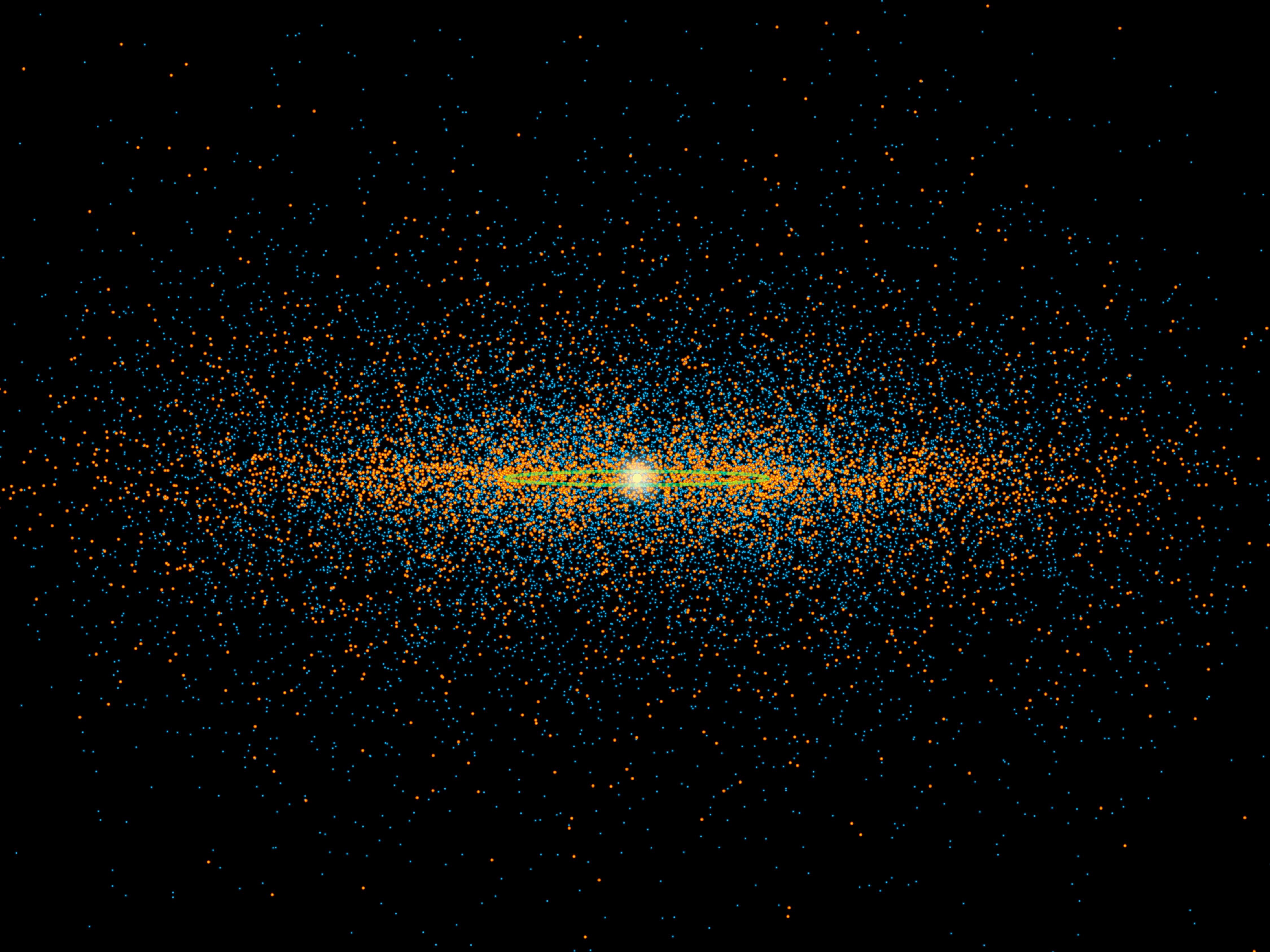
‘Potentially Hazardous Asteroids’ within the solar system identified by NASA’s NEO-WISE mission (Earth’s orbit in yellow)
The previous article The Boy Who Cried Wolf was written in late January, 1914, prior to the close passage of Asteroid 2012 DA14 to within 17,200 miles from Earth. And thanks to the simultaneous extraordinary event over the town of Chelyabinsk, Russia, much of the world’s population has at least some vague awareness of this celestial voyager and its brief sojourn in near Earth space, and of a most extraordinary ‘coincidence’. However, I am reasonably sure that only a very small minority of humankind grasps the significance of this confluence of cosmic events.
Allow me to elaborate.
On June 30, 1908 a small asteroid, or possibly a portion of a devolatilized comet nuclei, entered Earth’s atmosphere, moving about 5 miles per second and exploded over Siberia, five miles above the Earth’s surface. The explosion caused a powerful and devastating shock wave that swept over the old growth Taiga forest below, devastating over 820 square miles of trees. The shock wave was accompanied by intense fire in the immediate epicenter of the blast. In the zone of substantial damage resulting from this cosmic strike, massive trees with three-foot diameter trunks were blown over by the pressure wave and laid flat like new mown hay. In the fire zone directly under the blast, about 50 square miles in extent, where temperatures may have reached 30,000°K, there was basically nothing – all trees had been thoroughly incinerated.
Physicists have estimated the explosion to have been between 10 to 20 megatons of force, about the same as the blast caused by the largest hydrogen bombs ever tested by the United States in the early 1960s. This is more than a thousand times the power of the atomic bomb that wiped out Hiroshima, Japan, at the close of WWII and caused 80,000 immediate deaths.
Fortuitously, the region over which this mighty cosmic blast occurred was scarcely inhabited. It is not known if there were any direct casualties, maybe a few, nobody knows for sure. For the most part the region was uninhabited except for an isolated reindeer herder or hunter.
By contrast, were an equivalent event to happen today over a populated region or urban area, the loss of life would be immense. The 300,000 deaths from the Indonesian tsunami of 2004 would appear minor by comparison. To give some perspective, a major American city with a perimeter interstate highway enclosing it, is on the order of 800 square miles in extent. To use Atlanta, Georgia, as an example, were a cosmic object the size of the Tunguska bolide to detonate over downtown Atlanta, most everything within the perimeter enclosed by Interstate 285 would be devastated. The blast would be so powerful that people as far away as Macon, Georgia, (about 100 miles to the south) would be blown off their feet. That’s a lot of damage and a horrific number of casualties and injuries, likely in the millions. The same effects would pertain to any major metropolitan area, whether Washington DC, New York, London, Paris, Tokyo, Moscow or any other city of comparable size.
Asteroid 2012 DA14 was about 100 feet in diameter, a bit smaller than the Tunguska thunderbolt, but still large enough, if it were to impact Earth’s atmosphere, to take out a large city with an explosion equal to about 50 Hiroshima bombs. Considering that DA14 weighed about 40,000 metric tons and was traveling at a relative velocity of about 15,000 miles per hour, had it struck the ocean instead of land the ensuing tsunami would have been about 60 feet high or roughly twice the height of the tsunami that obliterated the Japanese coast in 2011. We can breathe a sigh of relief that DA14, while disconcertingly close in the cosmic sense, is headed back toward the asteroid belt, from whence it came.
But here is something to consider: If the angle of approach of DA14 to Earth had been only slightly different, we could still be in reeling in shock from a disaster unprecedented in scope within the last several thousand years. The time separating us from impact as it crossed Earth’s orbit was estimated to be about 15 minutes.
Calculations show that on its return journey, less than a year from now, DA14 will again cross Earth’s orbital path but will be considerably removed from Earth’s position at that time.
However, it must be understood that there are countless thousands of other similar objects orbiting about the Sun that could potentially be in Earth-crossing orbits.
Because of the cosmic coincidence of February 15, millions of people became aware of the fact that an asteroid made a dangerously close pass by Earth on that day. However, very few people are aware of the fact that on June 27, 2011 a small asteroid, 2011 MD, about the same size as the meteor which exploded over Russia on February 15, passed within 7,500 miles of the Earth, less than the diameter of the Earth itself and 10,000 miles closer than Asteroid 2012 DA14.
Or, that on October 7 of 2012 another asteroid, 2012 TV, passed well within the orbit of the Moon. It was about 100 feet in diameter, about the size of DA14.
Or, that only five days later still another asteroid 2012 TC4, somewhat larger than the Russian meteor at about 56 feet in diameter, came within 59,000 miles of the Earth. That’s about one quarter the distance to the Moon.
Or, that on March 2, 2009 an asteroid about the size of the Tunguska bolide was spotted as it passed within 49,000 miles of the Earth, about one fifth the distance to the Moon.
Or, that on January 28, 2008 asteroid 2007 TU24, almost a thousand feet in diameter, flew by just outside the orbit of the Moon.
Or, that on July 3, 2006, an object 2004 XP14 zoomed by Earth just outside the lunar orbit. It may have been as large as a half-mile in diameter.
Or, that on March 19, 2004 an asteroid about the same size as DA14 zipped by Earth at a distance of only 26,000 miles.
Or, that on September 27, 2003 an asteroid about the size of a house came within 54,000 miles of the Earth and was only discovered after it had passed.
Or, that on June 14, 2002, asteroid 2002 MN, 75-100 yards in diameter, zoomed within 75,000 miles of the Earth. That is nearly double the size of the meteor which exploded over Tunguska, Siberia in 1908 with the force of a giant hydrogen bomb.
Perhaps the most unsettling close encounter in recent times occurred on August 10, 1998. The object named 1998 ML14 was about 3,200 feet in diameter. At midnight Greenwich Mean Time this asteroid intersected Earth’s orbit at the exact spot Earth had occupied 18 hours earlier. Had ML14 arrived at 6:00 am the previous morning instead, and collided with the Earth, an area about the combined size of the states of Georgia, Alabama, North and South Carolina, Tennessee and Kentucky would have been utterly obliterated. Within two hours of impact most of the world’s vegetation would have been in flames and by October over one third of the human race would have been dead.
Between the years 1991 and 2000 there were no less than 9 close calls with cosmic objects, an average of about one per year.
The five days from February 12th to the 17th 2014 were remarkable days indeed.
On Tuesday evening, February 12, three days before the Russian event, there was a powerful and impressive meteor explosion over central Cuba, which shook buildings and scared the inhabitants. Several witnesses were interviewed by Cuban TV, with one witness reporting that “On Tuesday we left home to fish around five in the afternoon, and around 8:00 we saw a light in the heavens and then a big ball of fire, bigger than the sun.” Another witness, a woman at home at the time of the event, remarked: “My home shook completely. I had never heard such a strange thing.”
On Thursday evening, February 14, the night before the Russian meteor explosion, two separate brilliant fireballs were witnessed by thousands in San Francisco and southern California.
On that same day another huge fireball exploding over Japan was witnessed by many.
On Sunday the 17th about 7:30 in the evening, hundreds of residents along the southeastern coast of Florida witnessed multiple fireballs streaking across the sky.
In regards to the matter of the Russian bolide detonating only hours before the closest passage of DA14 to Earth, but without any reference to the other fireballs of those few days, various experts stated their opinion as to significance of the event
“It’s simply a coincidence, “said Paul Chodas, asteroid researcher at NASA’s Jet Propulsion Laboratory.
“They are completely unrelated objects – it’s a strange coincidence they are happening at the same time,” observed Don Yeomans, manager of the Near-Earth Object Program at JPL.
“This is literally a cosmic coincidence, although a spectacular one,” remarked Professor Alan Fitzsimmons, Astrophysics Research Centre at Queen’s University, Belfast.
Coincidence?
Probably so, but other sober-minded and learned men in considering the circumstances surrounding the Tunguska event of 1908 also called upon the role of coincidence.
The late astronomer Fred Whipple (1906 – 2004), one of the godfathers of comet science was probably the first American astronomer to investigate the Tunguska explosion of 1908. He took note of the auspicious timing of the event:
“There are many marvelous features in the story of the Siberian meteor, a story without parallel in historic times. It is most remarkable that such an event should occur in our generation and yet be so nearly ignored. No civilized man sought out the falling place of the meteor for twenty years, and even now no one has followed up the track of the pioneer. . . This paper has been devoted to incidental effects and it is therefore appropriate to emphasize two coincidences. Seismographs were in readiness to demonstrate that earth waves can be produced by the impact of a meteor with the ground. Microbarographs had been invented just in time to preserve records of the air waves generated in the atmosphere. If the meteor had fallen even five years earlier there would have been no evidence for the spreading of the air waves beyond the immediate locality of the fall; if it had fallen twenty years earlier we should have known nothing of the earth waves.” [See: Whipple, F. J. W., Sc.D. (1930) The Great Siberian Meteor and the Waves, Seismic and Aerial, which it Produced: Quarterly Journal of the Royal Meteorological Society, vol. 56, pp. 287-304]
In the introduction to The Fire Came By, by John Baxter and Thomas Atkins (Doubleday & Company, 1976) the Late Isaac Asimov wrote:
“It was an amazing fall. On the one hand, it did enormous damage, for it fell in a forest and knocked down every tree for scores of miles in every direction. On the other hand, it did very little damage, for it killed not one human being.
Consider how unusual that had to be.
Seventy percent of the Earth’s surface is water. If that fall had taken place anywhere in the ocean, tsunamis (so-called “tidal waves”) would have washed the nearer shores and done much damage. Another 10 percent of the Earth’s surface is covered by permanent ice. If the fall had taken place there, enough melting might just barely have come about to cause the slippage of large quantities of ice into the ocean, bringing about catastrophic changes in Earth’s sea level and climate.
At least 15 per cent of what is left of Earth’s surface is populated, more or less thickly, with human beings; and is littered, more or less thoroughly, with the products of their civilization. If the fall had taken place there, anywhere from hundreds to millions of people would have been killed and anywhere from thousands to billions of dollars of damage would have been inflicted. The fall would have completely wiped out any city it had struck.
Perhaps not more than 5 percent of the surface of the Earth could have received that 1908 blow without any damage at all being done to human life and property. And, with the odds twenty to one against it, that fall took place safely (from the human standpoint).
By the same token, though, the place in which the fall occurred was inaccessible (else it would have been populated) and it was years before the vicinity could be examined. It was only then that the real mystery began…
…consider that the fall managed to find a one-in-twenty place where it would do no damage, almost as though someone was humanely trying to avoid―”(???)
Whatever the significance of the curiously auspicious timing and siting of the Tunguska Event of 1908, the lessons it has to teach us are of the utmost importance, raising profound questions about both the past and the future of mankind upon the Earth. We will be exploring these questions and more in upcoming articles on this website so stay tuned.
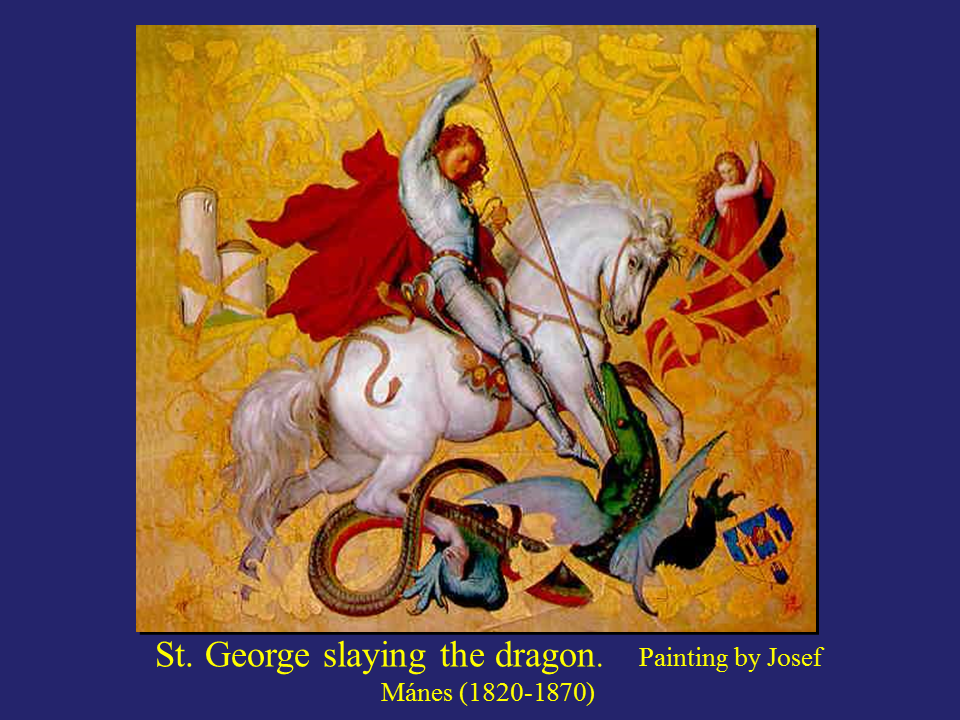
Part 3: “Here there be Dragons”
In Part 2 of this series I discussed some of the many close encounters between Earth and celestial objects that had occurred in recent decades. This came on the heels of a series of events that, for a brief few days at least, riveted the world’s attention on the bigger picture of the cosmic environment. In the wake of the events of February 2014, the well-known Professor of Theoretical Physics, Michio Kaku, wrote in Newsweek:
“It’s sobering to realize that we live in the middle of a cosmic shooting gallery. There are about a million asteroids that orbit near the path of Earth. Of these, NASA estimated in 2007 that perhaps 20,000 can one day pose a direct threat to Earth . . . Today our instruments are revealing how frequent near misses really are, and the results are deeply disturbing.”
While the furor seems to have died down as of this writing (late March 2014), the close encounters continue to accumulate. Between March 4th and March 10th four new asteroids buzzed Earth. The largest of the four, at 120 to 130 feet in diameter, was almost the size of the Tunguska object of 1908. None of four these objects had been detected more than several days to a couple of weeks prior to their close fly-by. Engineer Paul Cox of the Slooh Space Camera in the Canary Islands remarked, “This should be a wake-up call to governments. We know the solar system is a busy place. We’re not sitting here on our ‘pale blue dot’, on our own in nice safety.”
Then clustered around April Fools’ Day, dramatically reinforcing the concern of Michio Kaku, Paul Cox and a growing number of scientists, four more asteroids zoomed through near-Earth space. This was widely reported in Russian media but seems to have slipped through the cracks in the U.S. The largest of the four was 4034 Vishnu, about 800 meters across, discovered in 1986. This asteroid had a volume about 5000 times greater than the Tunguska object. An object this size impacting Earth would most definitely have serious consequences, causing widespread environmental havoc, millions of casualties and most likely triggering a global economic collapse that could take years or decades to recover from.
What we see happening is the beginning of a major paradigm shift regarding our planetary status in the Universe. A number of parallel strands of research are now converging. As made clear in these last several months, and as discussed in my two previous articles, astronomers now realize that near Earth space is densely populated with a variety of cosmic entities. Geologists have in turn realized that Earth bears the scars of hundreds of encounters with these entities and that the known craters, or astroblemes (literally – ‘star wounds’), are but a small fraction of the estimated number of impacts that have occurred. Meanwhile paleontologists have recognized that major and dramatic interruptions have occurred repeatedly in the ongoing evolution of life on Earth, thought to be largely the result of these repeated encounters. And now, we come full circle as many archeologists and pre-historians have become aware of the fact that the historical record, like the biological record, displays numerous interruptions, and evidence is mounting that these interruptions are also the consequence of incursions by cosmic objects into the terrestrial environment. And it is becoming evident that just as species have suffered cosmically induced extinctions, so have civilizations.
Finally, mythologists and historians of religion are beginning to recognize that the legacy of archaic wisdom traditions is replete with accounts and stories of those encounters and the profound role they played in shaping the history, psychology and religious beliefs of earlier cultures.
Over the years as I have discussed and lectured on the importance of cosmic encounters in the history of life on Earth and on the evolution of civilization, I have been asked on several occasions, why, if these celestial events played such an important role in history are there not more explicit accounts from the writings of ancient cultures.
The answer to that question is that they do exist, and in abundance, but can only be understood within the framework of symbolism in which they were recorded. To many people through history and widely dispersed about the globe, meteors, fireballs and comets were represented by a variety of symbols and images, the most prominent being dragons and serpents.
Regarding the prevalence of this dragon symbol in the myths of ancient cultures, British astronomers Victor Clube and Bill Napier, wrote in 1982: “The earliest recorded myths are those of combat, between a god or hero and a dragon. The dragon was a familiar figure in Greece, Egypt, Mesopotamia, Babylon, India, China, North America, and elsewhere. Usually, he has the form of a winged serpent. He is a gigantic monster; he spouts fire and smoke; bellows and hisses; he throws rocks, and is the creator of terrible destruction; and his home is in the sky.” (The Cosmic Serpent: A catastrophist view of Earth History: Universe Books, New York)
Another example comes from the ancient Far East, as recorded by Engelbert Kœmpfer, M.D in 1728: “In the thirty-sixth year of his reign, it rain’d Stars from Heaven, in Japan…In the 40th year of his reign, on a clear and serene day, there arose of a sudden in China, a violent storm of thunder and lightning: Comets, Fiery-Dragons and uncommon Meteors appeared in the Airs, and it rain’d fire from Heaven.”
Roberta J. M. Olson in Fire and Ice: A History of Comets in Art (1985) writes: “Certain artistic conventions were employed in the rendering of comets and these carried over to images of other celestial events. For example, the English artist Thomas Sandby recorded a large meteor observed in August 1783 which was identified with the ancient type called Draco volans, or “flying dragon”.”
Such examples could be multiplied many times over.
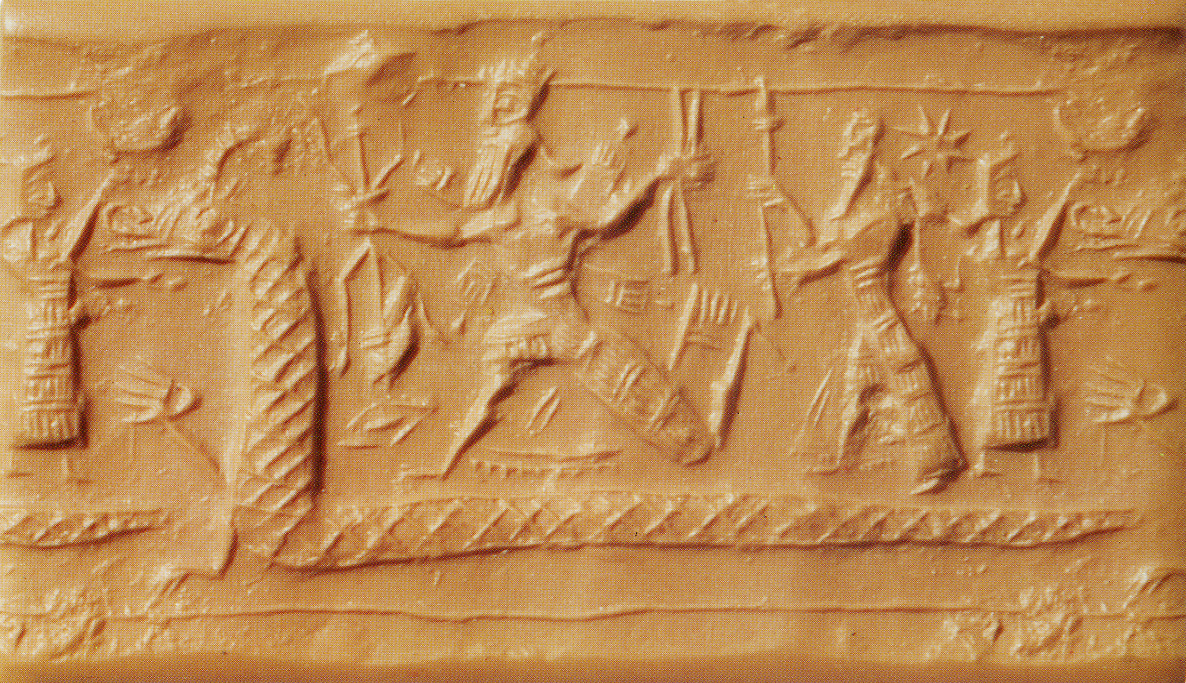
Figure 1 Marduk doing battle with the great demon dragon Tiamat. From a Babylonian Cylinder Seal
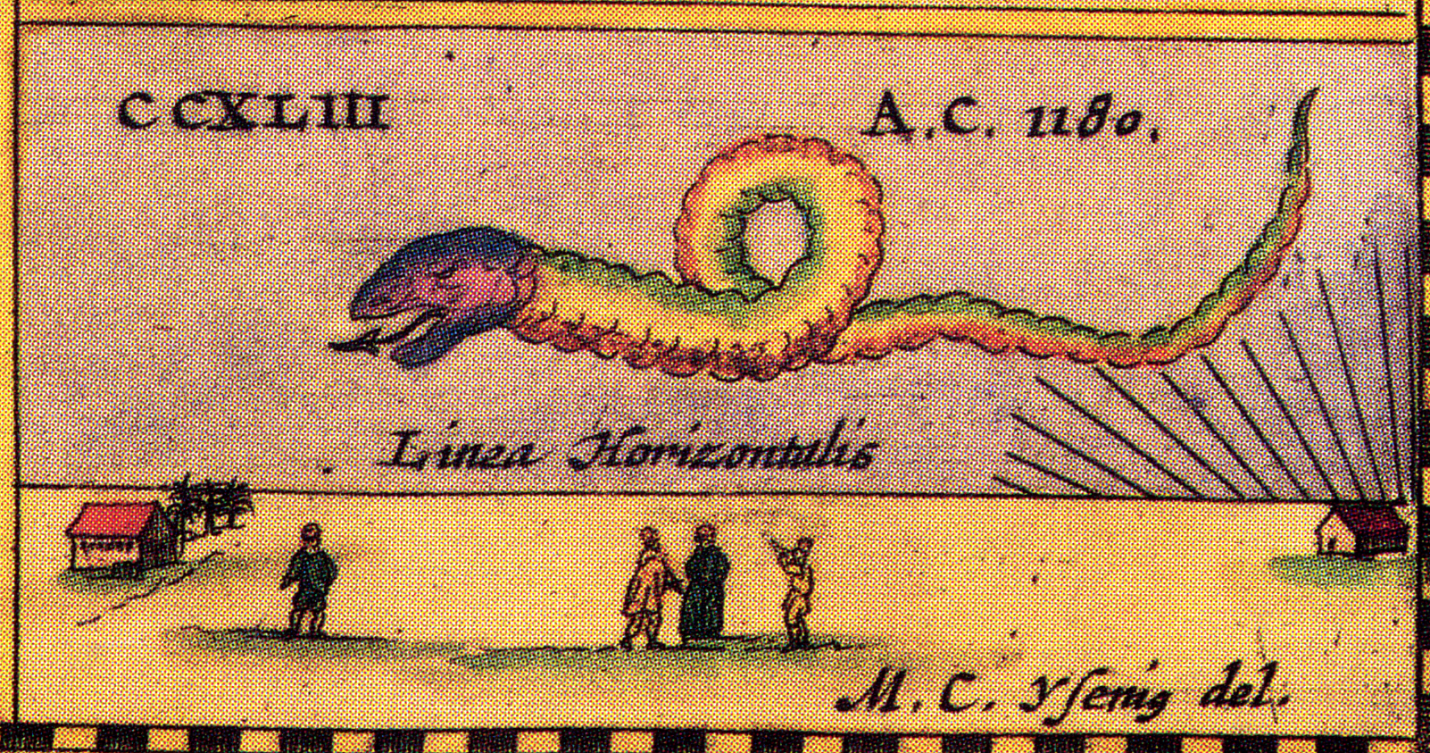
Figure 2 Comet as a great celestial serpent/dragon. From Theatrum Cometicum
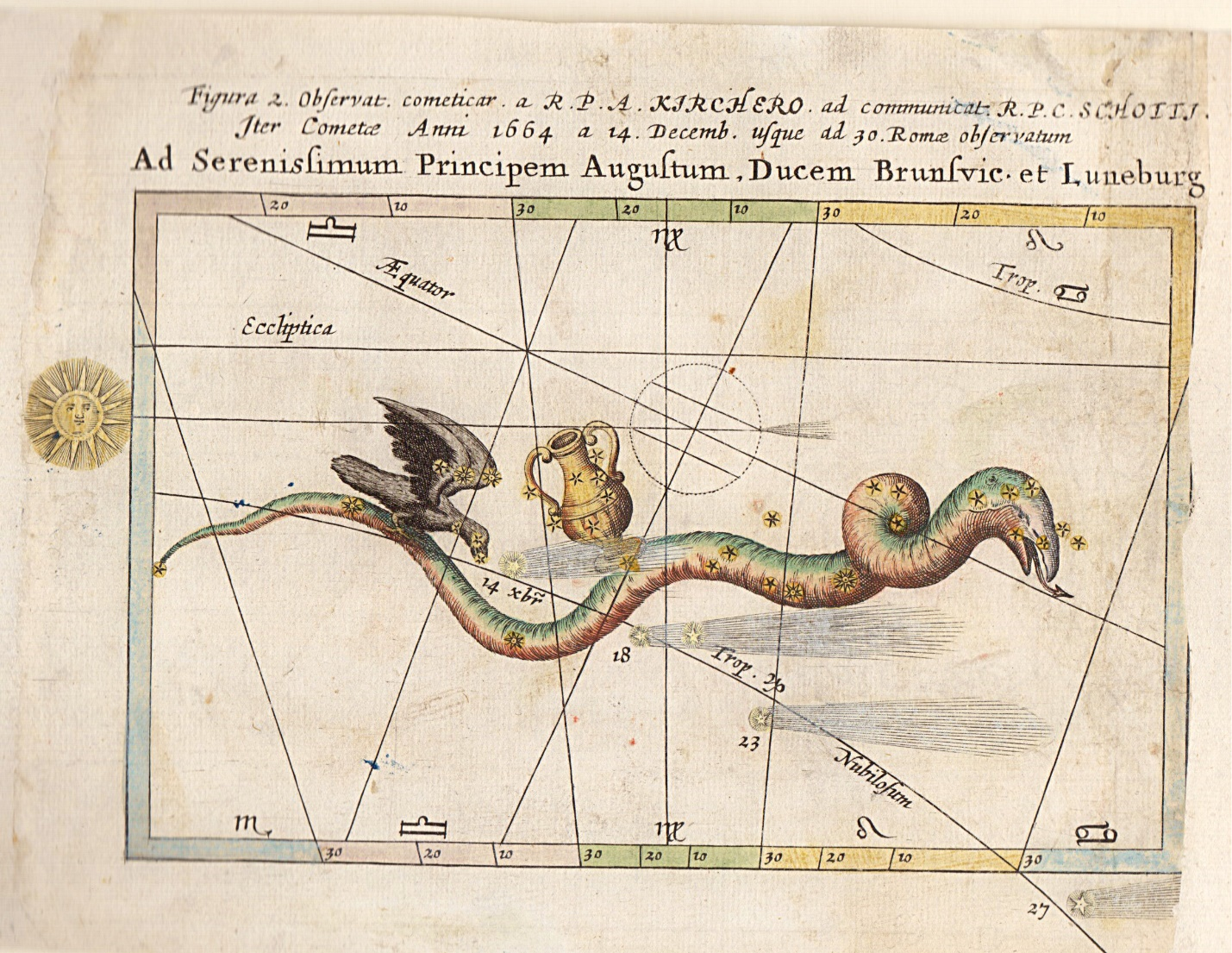
Figure 3 From Theatrum Cometicum showing the path of the comet of 1664 depicted as a great serpent
For more like this see: http://www.comethunter.de/theatrum.html
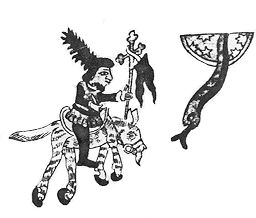
Figure 4 From a Pre-Columbian Mexican Codex. Meteor/comet as celestial serpent
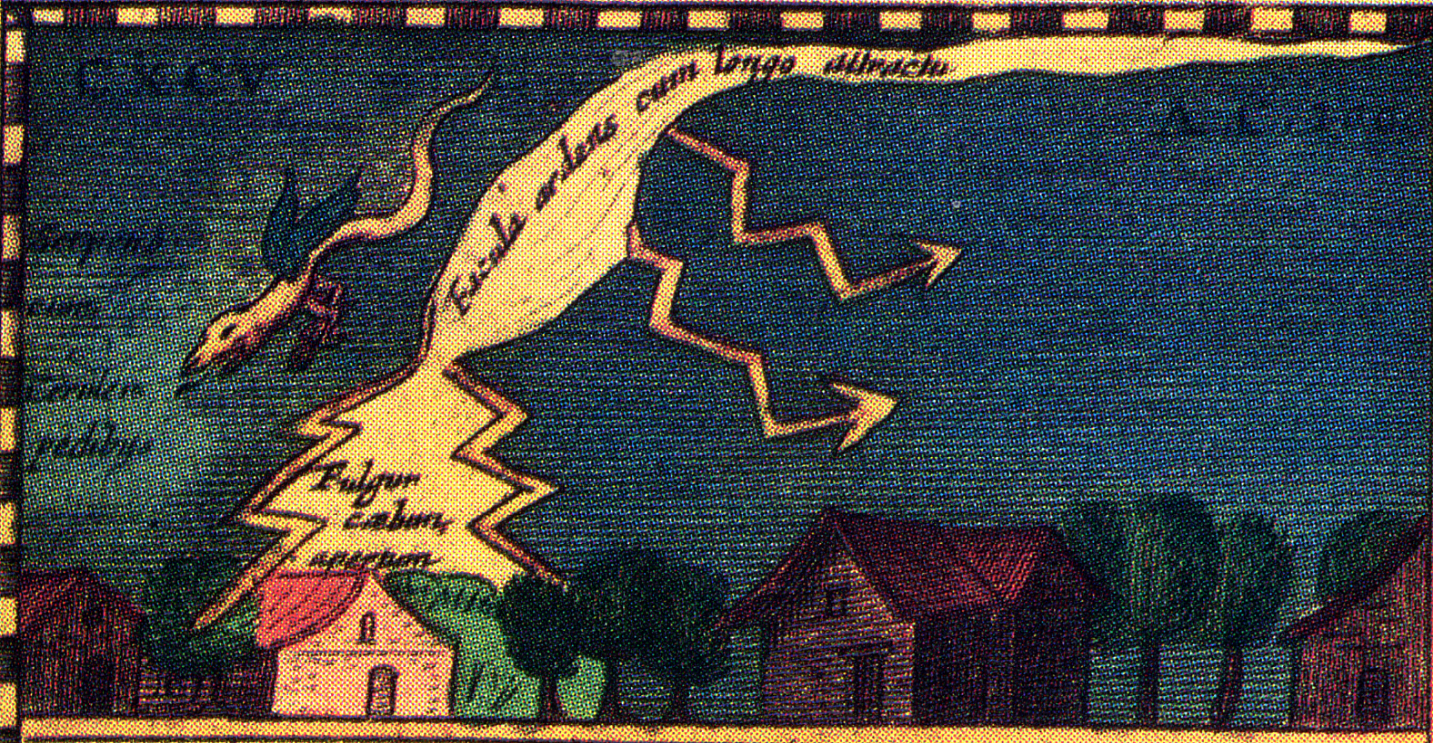
Figure 5 Medieval depiction of meteor/fireball as descending dragon
We also have Zeus, or Jupiter as he was called by the Romans, well-known for hurling his mighty thunderbolts. Astronomers now understand the important role that the giant planet Jupiter plays in modulating the delivery of asteroids and comets from the outer Solar System into near-Earth space. Interestingly, the Buddha too, is often depicted holding the thunderbolt, or ‘djorje’, symbol of cosmic power.
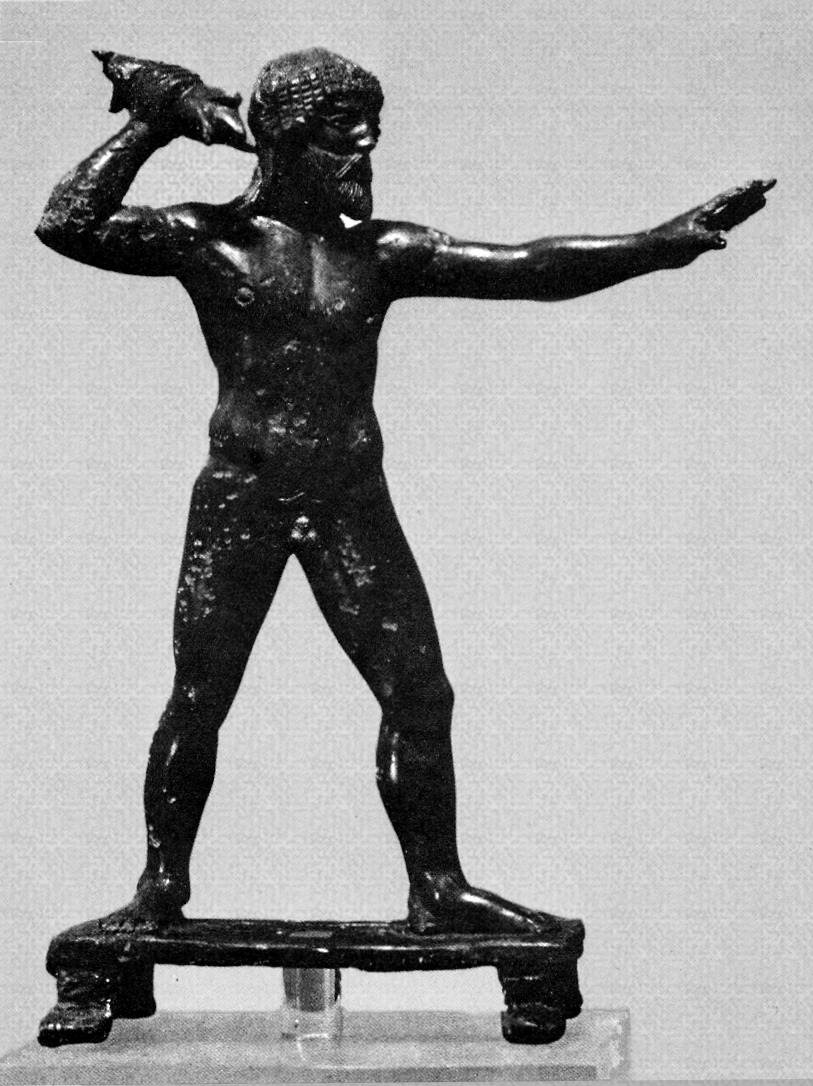
Figure 6 Zeus hurling his thunderbolt. Statue is in the National Archaeological Museum, Athens. Dates from ca. 450 B.C.
In addition to dragons, serpents and thunderbolts, other images and symbols invoked by the ancient peoples to represent celestial objects were burning torches and lamps, swords, swastikas, beams, and stones. Comets were often indicated by long hair or beards, brooms, the Greek ‘omega’ symbol, chariots, and scythes or sickles.
Literacy in this language of cosmic symbolism opens up a whole new domain of understanding about our human past on this planet, and elucidates one very important reason that ancient cultures all over the Earth were so obsessively interested in what happened in the heavens. The legacy of ritual, symbolic architecture, and the sacred and prophetic writings of our ancient predecessors conveys a powerful and compelling significance concerning our place in the Cosmos. It would behoove us mightily to pay attention to their message, even as the ‘Denizens of the Deep’ continue to encroach upon our celestial neighborhood.
Copyright: Randall W. Carlson
